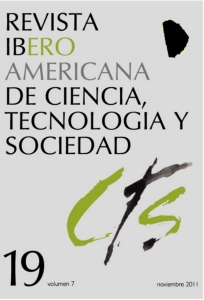Convergences and divergences in the notion of computing
DOI:
https://doi.org/10.52712/issn.1850-0013-732Keywords:
effective procedure, pancomputationalism, interpreters, universal machineAbstract
Tracking the genealogy of the idea of computing and elucidating its scope and limits is a much needed task that exceeds the mere exegesis. Despite the fact -or perhaps because of it- that this notion has become central in many disciplines, it is not clearly determined, it has no definite ontological status and it is constantly under suspicion and attacked from different fronts. In this article, we consider the confluence of ideas that in the 30s of the 20th Century rose to the notion of effective calculability and, on the following decade, to the construction of actual computers. Furthermore, we consider certain conceptual divergences that surfaced with the emergence of electronic computers and computationalism in the philosophy of mind, having important repercussions on the understanding of these artifacts and on the new discipline of computer science. Finally, we aim at understanding computing systems in order to introduce a new perspective on current debates, stressing the notion of program which although undoubtedly present in many of the original ideas, it has been unfairly forgotten.
Downloads
References
ABELSON, H y SUSSMAN, G. J. (1996): Structure and Interpretation of Computer Programs, MIT Press, Cambridge, MA, 2ª edición.
BLANCO, J., CHERINI, R., DILLER, M. y GARCÍA, P. (2010): “Interpreters as computational mechanisms”, 8th Conference on Computing and Philosophy (ECAP), octubre.
BLANCO, J., CHERINI, R., DILLER, M. y GARCÍA, P. (2011): “A behavioral characterization of computational systems”, 1st Conference of the International Association on Computing and Philosophy (IACAP), julio.
DAVIS, M. (2000): The Universal Computer: The Road from Leibniz to Turing, W.W. Norton & Company.
DIJKSTRA, E. W. (1988): “On the cruelty of really teaching computing science”, circulación privada, diciembre.
EDEN, A. H. (2007): “Three paradigms of computer science”, Minds Mach, 17(2), pp. 135-167.
EDEN, A. H. y TURNER, R. (2007): “Problems in the ontology of computer programs”, Applied Ontology, 2(1), pp. 13-36.
FEFERMAN, S., DAWSON JR, J. W., KLEENE, S. C., MOORE, G. H., SOLOVAY, R. M. y VAN HEIJENOORT, J. (eds.) (1986): Kurt Godel: collected works, Vol. 1: Publications 1929-1936, Nueva York, Oxford University Press, Inc.
GANDY, R. O. (1988): “The Confluence of Ideas in 1936”, en R. Herken (ed.): The Universal Turing Machine: A Half-Century Survey, Oxford, Oxford University Press, pp. 55-111.
HE, J. y HOARE, C. A. R. (1998): “Unifying theories of programming”, en E. Orlowska y A. Szalas (eds.): RelMiCS, pp. 97-99.
HEHNER, E. C. R. (1990): Beautifying Godel, Nueva York, Springer-Verlag New York, Inc., pp. 163-172.
JONES, N. D. (1997): Computability and complexity: from a programming perspective, Cambridge, MA, MIT Press.
MOOR, J. H. (1978): “Three myths of computer science”, British Journal for the Philosophy of Science, 29(3), pp. 213-222.
PUTNAM, H. (1987): Representation and Reality, MIT Press.
SEARLE, J. (2004): Is the brain a digital computer?
SIEG, W. (1994): “Mechanical procedures and mathematical experience”, en A. George (ed.): Mathematics and Mind: Papers from the Conference on the Philosophy of Mathematics held at Amherst College, 5-7 de abril de 1991, pp. 71-117.
TURING, A. M. (1937): “On Computable Numbers, with an Application to the Entscheidungsproblem”, Proc. London Math, s2-42(1), pp. 230-265, enero.
TURNER, D. (1995): “Elementary strong functional programming”, en P. H. Hartel y M. J. Plasmeijer (eds): Functional Programming Languages in Education, First International Syposium, FPLE ‘95, Nijmegen, Holanda, 4-6 de diciembre, Proceedings, volume 1022 of Lecture Notes in Computer Science.
Downloads
Published
How to Cite
Issue
Section
License
Copyright (c) 2024 CC Attribution 4.0

This work is licensed under a Creative Commons Attribution 4.0 International License.
All CTS's issues and academic articles are under a CC-BY license.
Since 2007, CTS has provided open and free access to all its contents, including the complete archive of its quarterly edition and the different products presented in its electronic platform. This decision is based on the belief that offering free access to published materials helps to build a greater and better exchange of knowledge.
In turn, for the quarterly edition, CTS allows institutional and thematic repositories, as well as personal web pages, to self-archive articles in their post-print or editorial version, immediately after the publication of the final version of each issue and under the condition that a link to the original source will be incorporated into the self-archive.











